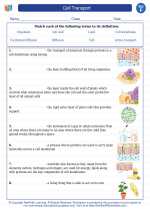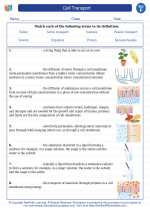Bone Tissue
Bone tissue is a type of connective tissue that makes up the skeletal system in vertebrates. It provides structural support, protects vital organs, facilitates movement, and serves as a reservoir for minerals such as calcium and phosphate.
Types of Bone Tissue
There are two main types of bone tissue: compact bone and spongy (cancellous) bone.
- Compact Bone: Also known as cortical bone, compact bone is dense and forms the outer layer of bones. It is strong and provides support and protection.
- Spongy Bone: Spongy bone is found at the ends of long bones and inside flat bones. It is less dense than compact bone and contains trabeculae, which provide structural support while also allowing for the passage of blood vessels and red bone marrow.
Components of Bone Tissue
Bone tissue is composed of cells and extracellular matrix, which includes collagen fibers and mineral salts.
Cells
- Osteoblasts: These cells are responsible for bone formation by secreting collagen and other organic components of the extracellular matrix.
- Osteocytes: Osteocytes are mature bone cells that maintain the bone tissue and regulate mineral homeostasis.
- Osteoclasts: These cells are involved in bone resorption, breaking down bone tissue and releasing minerals into the bloodstream.
Extracellular Matrix
The extracellular matrix of bone tissue consists of collagen fibers, primarily type I collagen, which provide tensile strength, and mineral salts, such as hydroxyapatite, which contribute to the hardness and rigidity of bone.
Functions of Bone Tissue
- Support: Bone tissue provides structural support for the body and anchors muscles, tendons, and ligaments.
- Protection: It protects vital organs, such as the brain, heart, and lungs.
- Movement: Bones, along with joints and muscles, facilitate movement and locomotion.
- Mineral Storage: Bone tissue serves as a reservoir for minerals, particularly calcium and phosphate, which are essential for various physiological processes.
- Hematopoiesis: Certain bones contain red bone marrow, where blood cells are produced through a process called hematopoiesis.
Study Guide
- Define bone tissue and explain its importance in the human body.
- Describe the differences between compact bone and spongy bone, including their locations and functions.
- Identify the main cell types found in bone tissue and their respective functions.
- Explain the composition of the extracellular matrix in bone tissue, including the roles of collagen fibers and mineral salts.
- Discuss the functions of bone tissue, such as support, protection, movement, mineral storage, and hematopoiesis.
- Compare and contrast the structure and function of bone tissue in different vertebrates, such as mammals, birds, and fish.
◂Science Worksheets and Study Guides Sixth Grade. Cell Transport
Worksheet/Answer key Cell Transport
Cell Transport  Worksheet/Answer key
Worksheet/Answer key Cell Transport
Cell Transport  Vocabulary/Answer key
Vocabulary/Answer key Cell Transport
Cell Transport  Vocabulary/Answer key
Vocabulary/Answer key Cell Transport
Cell Transport 

 Worksheet/Answer key
Worksheet/Answer key
 Vocabulary/Answer key
Vocabulary/Answer key
 Vocabulary/Answer key
Vocabulary/Answer key

The resources above cover the following skills:
Reading Standards for Literacy in Science and Technical Subjects
Craft and Structure
Determine the meaning of symbols, key terms, and other domain-specific words and phrases as they are used in a specific scientific or technical context relevant to grades 6-8 texts and topics.